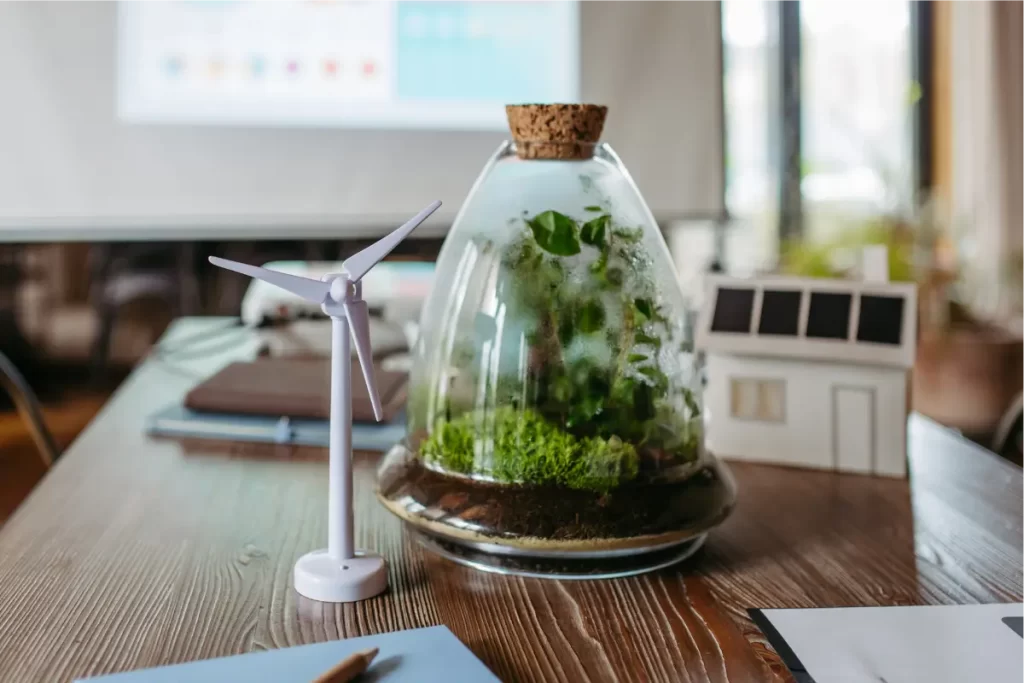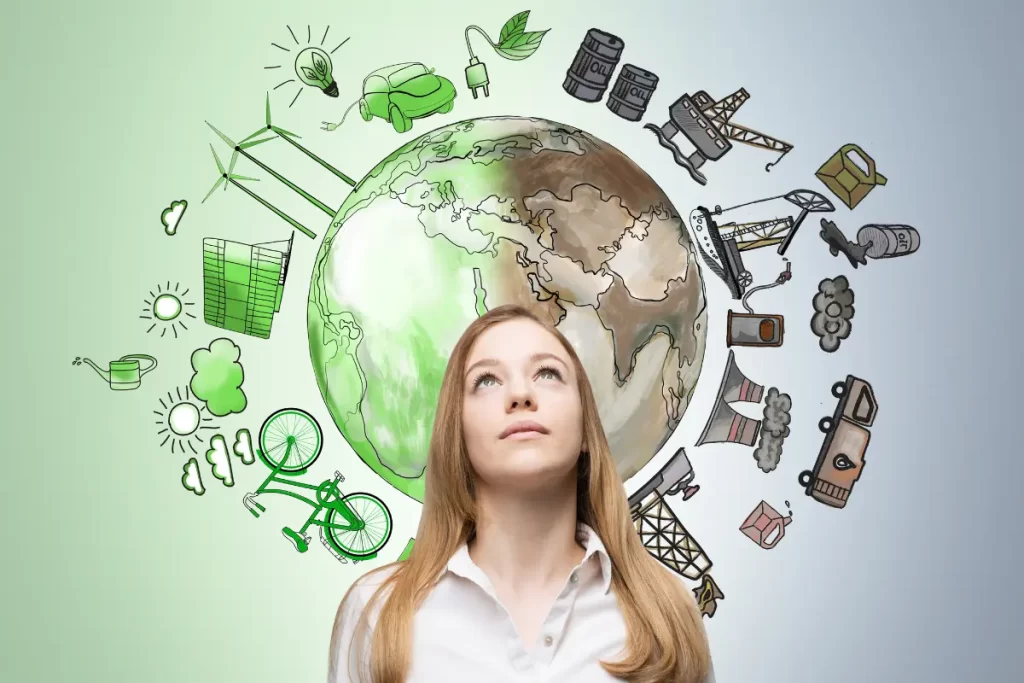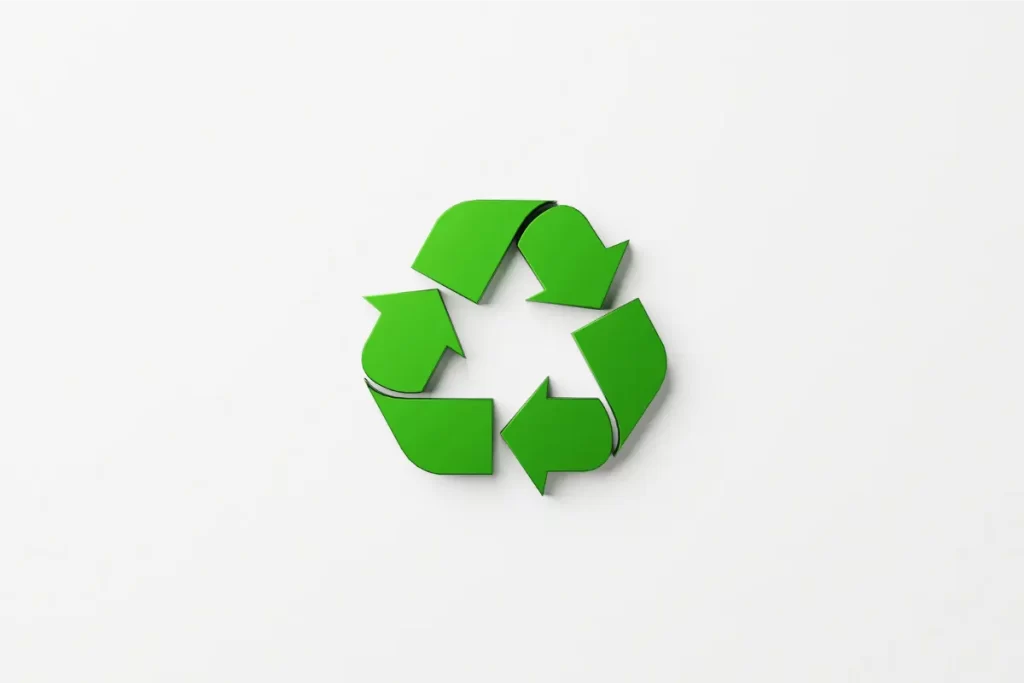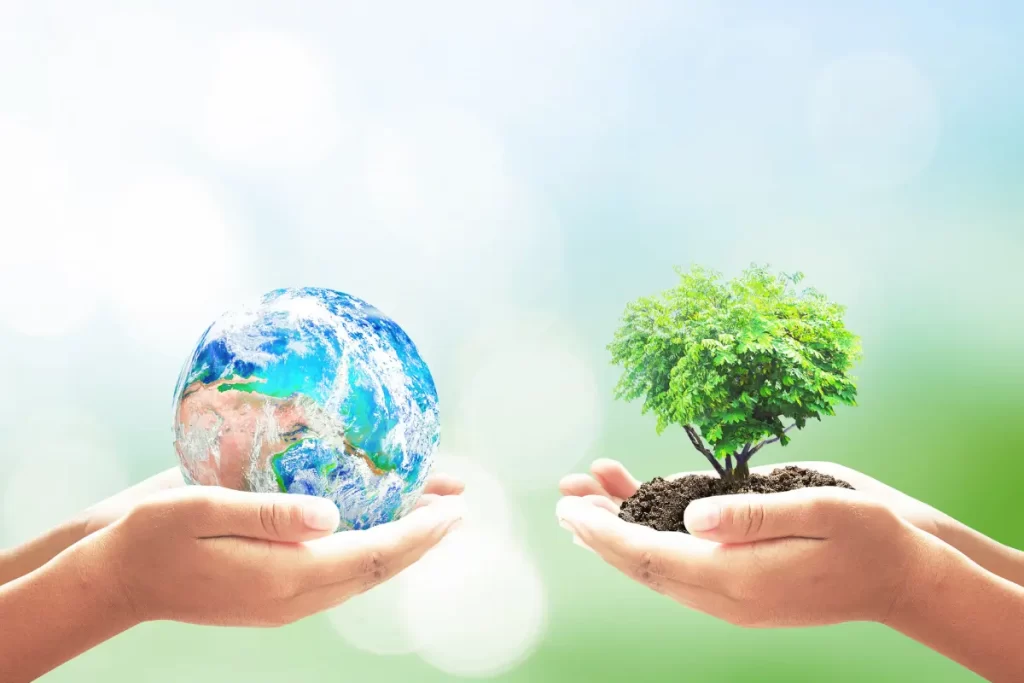Recycling has become more than just a buzzword; it’s a powerful tool that has the potential to revolutionize the way we interact with our environment. The act of transforming waste into valuable resources not only reduces the strain on our landfills but also presents us with unique environmental solutions. From repurposing plastic bottles to composting organic waste, recycling offers a myriad of benefits for both the planet and our communities.
We understand the importance of recycling and its positive impact on the world around us. Our commitment to sustainability drives us to embrace recycling practices in our everyday lives. By incorporating cutting-edge technologies and innovative approaches, we aim to turn waste into new products and minimize our ecological footprint.
In this article, we will explore the power of recycling and how it can help us create a more sustainable future. From the economic benefits to the environmental advantages, we will delve into the various ways recycling brings positive change to our world. Join us as we unlock the potential of recycling and discover the transformative impact it can have on our planet.

The importance of recycling for the environment
Recycling plays a crucial role in safeguarding the environment. By diverting waste from landfills, it helps reduce pollution and conserve natural resources. One of the key environmental benefits of recycling is the conservation of energy. The manufacturing process for producing goods from raw materials requires a significant amount of energy, which contributes to greenhouse gas emissions. However, by using recycled materials, we can save energy and reduce the release of harmful pollutants into the atmosphere.
Furthermore, recycling helps decrease the need for extracting and processing raw materials, such as minerals and timber. This, in turn, mitigates the destruction of natural habitats and preserves biodiversity. By recycling paper, for example, we can save countless trees and protect the ecosystems they support. Similarly, recycling aluminum can reduce the need for mining bauxite, the primary source of aluminum, which can have devastating effects on local environments.
In addition to conserving energy and natural resources, recycling also helps combat climate change. The decomposition of organic waste in landfills produces methane, a potent greenhouse gas. By diverting organic waste to composting facilities, we can prevent the release of methane into the atmosphere and mitigate its contribution to global warming. Recycling, therefore, plays a vital role in reducing greenhouse gas emissions and combating climate change.

How recycling helps reduce waste and conserve resources
One of the most significant advantages of recycling is its ability to reduce waste and conserve resources. When we recycle materials such as paper, plastic, glass, and metal, we give them a new lease on life, extending their usefulness and preventing them from ending up in landfills. By diverting waste from landfills, recycling helps alleviate the strain on limited landfill space and reduces the need for constructing new ones.
Moreover, recycling helps conserve valuable resources that would otherwise be extracted from the earth. For example, recycling aluminum cans saves up to 95% of the energy required to produce new cans from raw materials. Similarly, recycling plastic bottles not only saves energy but also reduces the demand for petroleum, the primary component of plastic. By recycling these materials, we can minimize our reliance on finite resources and preserve them for future generations.
Another important aspect of recycling is its ability to close the loop in the production cycle. Instead of a linear process where materials are used once and then discarded, recycling allows for a circular economy. In a circular economy, materials are continually recycled and reused, reducing the need for constant extraction of raw materials. This not only conserves resources but also reduces the environmental impact associated with extraction, transportation, and manufacturing processes.
Recycling statistics and its impact on greenhouse gas emissions
The impact of recycling on greenhouse gas emissions cannot be underestimated. According to the U.S. Environmental Protection Agency (EPA), recycling and composting activities in the United States alone prevented the release of approximately 191 million metric tons of carbon dioxide equivalents in 2018. This is equivalent to taking over 40 million cars off the road for an entire year.
Additionally, recycling reduces the emissions of other greenhouse gases, such as methane and nitrous oxide. When organic waste decomposes in landfills, it produces methane, a gas that is 25 times more potent than carbon dioxide in terms of its warming potential. By diverting organic waste to composting facilities, we can significantly reduce methane emissions and curb their impact on global warming.
Furthermore, recycling helps reduce the emissions associated with the extraction, transportation, and processing of raw materials. For example, mining and refining processes for metals like aluminum and steel are energy-intensive and release large amounts of greenhouse gases. By recycling these materials, we can save energy, reduce emissions, and mitigate climate change.

The process of recycling and its different stages
Recycling involves a series of stages that vary depending on the type of material being recycled. The first stage is collection, where recyclable materials are gathered from homes, businesses, and institutions. This can be done through curbside collection programs, drop-off centers, or specialized recycling facilities.
Once collected, the materials are sorted and separated based on their type. This is usually done in recycling facilities, where advanced sorting technologies, such as optical scanners and magnetic separators, are used to identify and separate different materials. The sorted materials are then processed to remove any contaminants and prepare them for recycling.
The next stage is the actual recycling process, where the materials are transformed into new products. This can involve various methods, such as melting, shredding, or pulping, depending on the type of material. For example, plastic bottles may be melted and molded into new bottles, while paper can be pulped and transformed into recycled paper products.
After the recycling process, the newly created products are packaged and distributed for sale and use. It is important to note that recycling is not a one-time process; materials can be recycled multiple times, further extending their lifespan and reducing the need for new raw materials. This closed-loop system is essential for creating a sustainable and circular economy.

Types of materials that can be recycled
A wide range of materials can be recycled, each with its own unique recycling process. Some common materials that can be recycled include paper, plastic, glass, metal, and organic waste.
Paper recycling involves collecting used paper products, such as newspapers, magazines, and cardboard, and processing them into new paper products. The paper is typically shredded and mixed with water to create a pulp, which is then cleaned and refined to remove contaminants. The pulp is then used to manufacture recycled paper products, such as tissue paper, cardboard, and office paper.
Plastic recycling involves collecting plastic containers, bottles, and packaging, and converting them into new plastic products. The plastic is sorted by type, such as PET or HDPE, and then cleaned and shredded. The shredded plastic is melted and molded into pellets, which can be used to create a variety of new plastic products, including plastic bottles, containers, and furniture.
Glass recycling involves collecting glass bottles and jars, which are then sorted by color and cleaned to remove any impurities. The glass is crushed into small pieces, called cullet, and mixed with raw materials, such as sand and soda ash. The mixture is melted and molded into new glass products, such as bottles, jars, and fiberglass.
Metal recycling involves collecting aluminum cans, steel cans, and other metal products, and processing them into new metal products. The metal is sorted by type and cleaned to remove any contaminants. It is then melted and refined to remove impurities before being shaped into new metal products, such as cans, car parts, and appliances.
Organic waste recycling, also known as composting, involves collecting food scraps, yard trimmings, and other organic materials, and converting them into nutrient-rich compost. The organic waste is mixed with other organic materials, such as leaves and wood chips, and allowed to decompose under controlled conditions. The resulting compost can be used to enrich soil, promote plant growth, and reduce the need for chemical fertilizers.

The benefits of recycling for businesses and the economy
Recycling offers numerous benefits for businesses and the economy as a whole. One of the key advantages is cost savings. By recycling materials instead of purchasing new ones, businesses can significantly reduce their production costs. For example, recycling paper can save on the cost of raw materials, energy, and waste disposal.
Furthermore, recycling can create new job opportunities and stimulate economic growth. According to the Recycling Economic Information (REI) Report, recycling and reuse activities in the United States accounted for 757,000 jobs and generated $36.6 billion in wages in 2019. Investing in recycling infrastructure and promoting recycling initiatives can, therefore, have a positive impact on local economies.
In addition to cost savings and job creation, recycling can also enhance a company’s reputation and brand image. Consumers are increasingly conscious of environmental issues and actively seek out businesses that prioritize sustainability. By adopting recycling practices and promoting their commitment to the environment, companies can attract environmentally conscious consumers and gain a competitive edge in the market.
Tips for effective recycling and waste management
To maximize the benefits of recycling, it is important to adopt effective recycling and waste management practices. Here are some tips to help you get started:
1. Educate and train employees: Provide training and educational materials to raise awareness about recycling and waste management practices. Encourage employees to actively participate and engage in recycling initiatives.
2. Implement a recycling program: Establish a recycling program in your workplace that includes separate bins for different types of recyclable materials. Make sure the bins are easily accessible and clearly labeled.
3. Reduce and reuse: Encourage employees to reduce waste by using reusable items, such as water bottles and coffee mugs. Implement policies that prioritize waste reduction and reuse.
4. Partner with recycling facilities: Identify local recycling facilities and establish partnerships to ensure proper disposal and recycling of materials. Stay informed about the recycling options available in your area.
5. Monitor and measure progress: Regularly monitor and measure your recycling efforts to track progress and identify areas for improvement. Set recycling goals and celebrate achievements.
By following these tips, businesses can optimize their recycling and waste management practices, minimize their environmental impact, and contribute to a more sustainable future.

Innovations in recycling technology and sustainable practices
In recent years, there have been significant advancements in recycling technology and sustainable practices. These innovations have revolutionized the recycling industry and opened up new possibilities for transforming waste into valuable resources.
One such innovation is the development of advanced sorting technologies. Optical scanners, for example, use sensors and cameras to identify and separate different types of materials based on their composition and color. This allows for more efficient sorting and reduces contamination, improving the quality of recycled materials.
Another notable innovation is the use of 3D printing technology in recycling. 3D printers can transform recycled plastics into new products, such as prosthetics, furniture, and even houses. This not only promotes recycling but also reduces the demand for new materials and minimizes waste.
Furthermore, sustainable practices, such as upcycling and circular design, have gained traction in the recycling industry. Upcycling involves transforming waste materials into products of higher value and quality. For example, old tires can be upcycled into furniture or playground equipment. Circular design focuses on designing products with the end of their lifecycle in mind, ensuring that they can be easily disassembled and recycled.
These innovations and sustainable practices are driving the evolution of recycling, making it more efficient, effective, and economically viable. By embracing these advancements, we can accelerate the transition to a circular economy and create a more sustainable future.
Government initiatives and policies to promote recycling
Governments around the world have recognized the importance of recycling and have implemented various initiatives and policies to promote its adoption. These measures aim to incentivize recycling, reduce waste generation, and create a supportive environment for recycling businesses.
One common approach is the implementation of deposit return schemes for beverage containers. These schemes encourage consumers to return their empty bottles and cans to designated collection points in exchange for a refund. By providing a financial incentive, deposit return schemes increase recycling rates and reduce littering.
Another effective policy is the introduction of landfill taxes and waste disposal fees. These taxes and fees encourage businesses and individuals to reduce waste generation and increase recycling. By making landfilling more expensive, governments create an economic incentive for recycling and waste reduction.
Furthermore, governments have established recycling targets and regulations to ensure that businesses and individuals meet certain recycling requirements. These targets may include specific recycling rates for different materials or industries. By setting clear goals and enforcing regulations, governments can drive recycling efforts and hold stakeholders accountable.
In addition to these initiatives, governments also play a crucial role in funding research and development for recycling technologies and sustainable practices. By providing financial support and resources, governments can accelerate the development and implementation of innovative recycling solutions.

Conclusion: Encouraging a culture of recycling for a greener future.
In conclusion, recycling holds immense power to transform waste into environmental solutions. By diverting waste from landfills, recycling reduces pollution, conserves resources, and mitigates climate change. From reducing energy consumption to creating new job opportunities, recycling offers a multitude of benefits for businesses, the economy, and the environment.
To harness the full potential of recycling, it is crucial for individuals, businesses, and governments to embrace a culture of recycling. By adopting effective recycling and waste management practices, investing in recycling infrastructure, and promoting recycling initiatives, we can create a more sustainable future for generations to come.
At [Brand], we are committed to promoting recycling and sustainability in all aspects of our business. Through our innovative approaches and cutting-edge technologies, we strive to minimize our ecological footprint and turn waste into valuable resources. Join us in our mission to unlock the power of recycling and create a greener, more sustainable world.
Let’s work together to transform waste into environmental solutions and build a better future for our planet. Together, we can make a difference.
